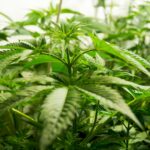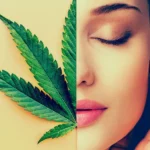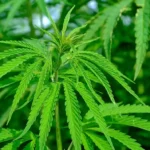FAQ
The use of marijuana varies from person to person and also there are various factors such as dosage, various methods of consumption, tolerance level varies from person to person, and most importantly the strain of marijuana use. There are many experiences felt by different people at different stages of using marijuana, and these experiences may differ depending on various circumstances, out of which very common are relaxation of the senses, different perception, increased appetite, enhancement of sensory experiences, anxiety, impaired short-term memory, and more. The effects of marijuana use can vary widely from person to person and depend on factors such as dosage, method of consumption, individual tolerance, and the strain of marijuana used. read more
The distinction between marijuanaand cannabis primarily lies in their usage and legal connotations. "Cannabis" is a broader term encompassing various strains of the plant Cannabis sativa, which includes marijuana. "Marijuana" specifically refers to the dried flowers, leaves, stems, and seeds of the Cannabis plant, typically used for recreational or medicinal purposes. However, the terms are often used interchangeably colloquially.
The differences between THC (tetrahydrocannabinol) and CBD (cannabidiol) in marijuana are significant and encompass several key aspects:
Psychoactive Effects:
THC is the primary psychoactive compound in marijuana, meaning it produces the "high" or euphoric sensation typically associated with cannabis use.
CBD is non-psychoactive and does not induce a high. It does not alter perception or consciousness in the same way THC does.
Medical Benefits:
THC is known for its medicinal properties, including pain relief, muscle relaxation, appetite stimulation, nausea reduction, and sleep improvement. It's commonly used for conditions like chronic pain, glaucoma, nausea from chemotherapy, and muscle spasticity in conditions like multiple sclerosis.
CBD also offers various potential therapeutic benefits, such as anti-inflammatory, analgesic, anti-anxiety, anti-seizure, and neuroprotective properties. It's used to manage conditions like epilepsy, anxiety disorders, inflammation-related pain, and certain neurological disorders.
Legal Status:
THC's psychoactive effects contribute to its legal classification as a controlled substance in many jurisdictions. Its legality varies significantly worldwide, with some regions legalizing it for medicinal or recreational use under certain conditions.
CBD, particularly when derived from hemp with low THC content, is legal in many places and is often available as a dietary supplement or as an ingredient in various products. However, the legal status of CBD can still vary depending on its source and the laws of the specific jurisdiction.
Side Effects:
THC can induce side effects such as impaired motor coordination, increased heart rate, dry mouth, red eyes, memory impairment, and in some cases, anxiety or paranoia. These effects are typically dose-dependent.
CBD is generally well-tolerated, with few reported side effects. However, some individuals may experience mild side effects such as dry mouth, drowsiness, diarrhea, or changes in appetite. CBD is considered non-intoxicating and does not produce the typical psychoactive effects associated with THC.
Interaction with Endocannabinoid System:
Both THC and CBD interact with the body's endocannabinoid system, albeit in different ways. THC binds directly to cannabinoid receptors (CB1 and CB2), mimicking the actions of endocannabinoids produced naturally in the body. This interaction accounts for its psychoactive effects.
CBD has a more indirect interaction with cannabinoid receptors and other neurotransmitter systems. It modulates the activity of cannabinoid receptors and influences the release of neurotransmitters like serotonin and glutamate, which contributes to its various therapeutic effects.
Understanding these differences is crucial for individuals considering the use of marijuana or marijuana-derived products for recreational or medicinal purposes.
Marijuana affects the body and mind by interacting with the endocannabinoid system. Its active compounds, like THC and CBD, bind to receptors in the brain and body, leading to effects such as euphoria, relaxation, increased heart rate, altered perception, impaired coordination, and changes in mood and memory. These effects can vary based on factors like dosage, method of consumption, and individual tolerance.
Comparing the safety of marijuana to alcohol or tobacco depends on various factors. While marijuana may pose fewer risks of fatal overdose and addiction compared to alcohol and tobacco, it still carries health risks and legal implications. Ultimately, the safety of each substance varies based on individual use, societal context, and legal status.
The question of whether marijuana is "bad" for you is complex and nuanced, and it depends on various factors, including individual circumstances, patterns of use, and overall health. Here are some key points to consider:
Potential Health Risks: Like any psychoactive substance, marijuana carries potential health risks, particularly when used excessively or over a long period. These risks may include respiratory issues from smoking, cognitive impairment, dependence or addiction, mental health problems (such as anxiety, depression, or psychosis, especially in susceptible individuals), and negative effects on brain development when used during adolescence.
Short-Term Effects: In the short term, marijuana use can impair judgment, coordination, and memory, which can increase the risk of accidents and injuries. It can also cause temporary side effects such as dry mouth, red eyes, increased heart rate, and altered perception of time.
Therapeutic Potential: Despite potential risks, marijuana also has recognized therapeutic potential. It's used medicinally to manage symptoms associated with various medical conditions, such as chronic pain, nausea, muscle spasms, and certain mental health disorders. Cannabidiol (CBD), a compound found in marijuana, has gained attention for its potential therapeutic effects without causing the "high" associated with THC.
Individual Factors: Individual factors such as genetics, age, mental health history, and frequency of use can significantly influence how marijuana affects an individual. What might be manageable or beneficial for one person could be problematic for another.
Legal Considerations: The legal status of marijuana varies widely across different jurisdictions. In some places, it's legal for recreational and/or medicinal use, while in others, it remains illegal. Legal consequences associated with marijuana use can vary depending on local laws.
Mode of Consumption: The method of consuming marijuana can also impact its potential health effects. Smoking marijuana exposes the lungs to potentially harmful chemicals, similar to tobacco smoke, while alternative methods like vaporization or edibles may carry different risks.
Ultimately, whether marijuana is "bad" for you depends on a multitude of factors, including how it's used, individual health factors, and local laws. Like any substance, using marijuana responsibly and in moderation is key to minimizing potential risks and maximizing potential benefits. It's important for individuals to educate themselves about the potential effects of marijuana and make informed decisions based on their own circumstances and values. If someone has concerns about their marijuana use or its effects on their health, they should consult with a healthcare professional for personalized advice and support.
It depends on various factors, including individual health, reasons for use, dosage, method of consumption, and personal circumstances. It's essential to consider potential health effects, legal implications, and how daily use may impact your overall well-being. Consulting with a healthcare professional knowledgeable about cannabis can provide personalized guidance.
If you don't have rolling papers, there are several alternative methods to smoke weed:
1. Pipe: A pipe is one of the simplest and most efficient ways to smoke weed without rolling papers. Load the ground cannabis into the bowl, light it, and inhale through the mouthpiece.
2. Bong or Water Pipe: Similar to a pipe but with the added advantage of water filtration, which can make the smoke smoother. Fill the bong's chamber with water, pack the bowl with cannabis, light it, and inhale through the mouthpiece.
3. DIY Pipes: You can fashion a pipe out of various household items such as apples, potatoes, soda cans, or even a pen. Be cautious with DIY pipes, as some materials may release harmful chemicals when heated.
Vaporizer: Vaporizers heat cannabis to a temperature that releases cannabinoids but doesn't combust the plant material, resulting in vapor instead of smoke. There are portable vaporizers available that are convenient to use.
4. Hookah: You can use a hookah to smoke weed by replacing the traditional hookah tobacco with cannabis. However, this method requires a bit more setup and is often more suitable for group settings.
5. Hot Knives: Heat a pair of metal knives on a stove or using a torch until they're red hot. Place a small amount of cannabis between the blades and press them together to create smoke, which you inhale through a funnel or bottle.
6. Gravity Bong: Create a gravity bong using a plastic bottle and a larger container filled with water. Cut the bottom off the bottle, place it in the water, pack the cap with cannabis, light it, and slowly lift the bottle out of the water to fill it with smoke. Unscrew the cap and inhale the smoke.
Remember to use caution and ensure that any makeshift smoking devices are safe to use and free from harmful materials. Additionally, be mindful of local laws and regulations regarding cannabis use.






